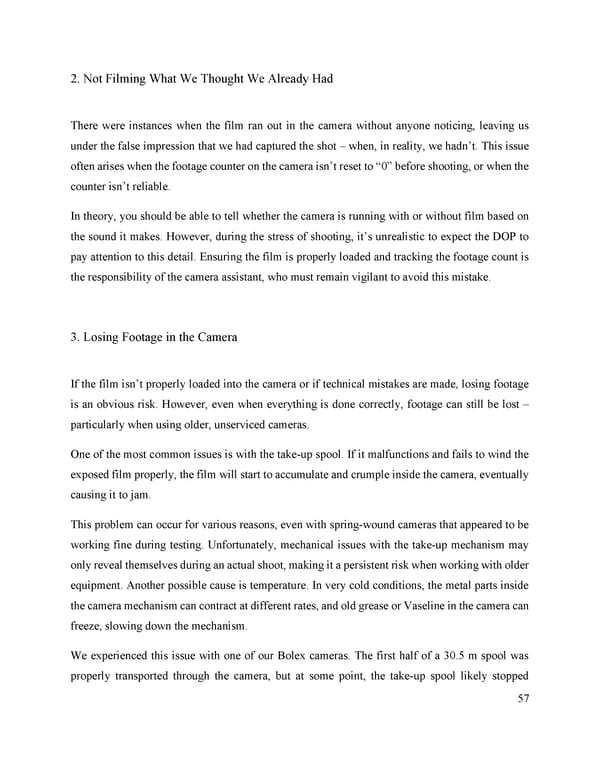2. Not Filming What We Thought We Already Had There were instances when the film ran out in the camera without anyone noticing, leaving us under the false impression that we had captured the shot – when, in reality, we hadn’t. This issue often arises when the footage counter on the camera isn’t reset to “0” before shooting, or when the counter isn’t reliable. In theory, you should be able to tell whether the camera is running with or without film based on the sound it makes. However, during the stress of shooting, it’s unrealistic to expect the DOP to pay attention to this detail. Ensuring the film is properly loaded and tracking the footage count is the responsibility of the camera assistant, who must remain vigilant to avoid this mistake. 3. Losing Footage in the Camera If the film isn’t properly loaded into the camera or if technical mistakes are made, losing footage is an obvious risk. However, even when everything is done correctly, footage can still be lost – particularly when using older, unserviced cameras. One of the most common issues is with the take-up spool. If it malfunctions and fails to wind the exposed film properly, the film will start to accumulate and crumple inside the camera, eventually causing it to jam. This problem can occur for various reasons, even with spring-wound cameras that appeared to be working fine during testing. Unfortunately, mechanical issues with the take-up mechanism may only reveal themselves during an actual shoot, making it a persistent risk when working with older equipment. Another possible cause is temperature. In very cold conditions, the metal parts inside the camera mechanism can contract at different rates, and old grease or Vaseline in the camera can freeze, slowing down the mechanism. We experienced this issue with one of our Bolex cameras. The first half of a 30.5 m spool was properly transported through the camera, but at some point, the take-up spool likely stopped 57
 Lost Analogue: Exploring Film, Music, and Interdisciplinary Methods in Education Page 57 Page 59
Lost Analogue: Exploring Film, Music, and Interdisciplinary Methods in Education Page 57 Page 59